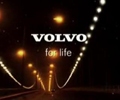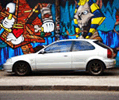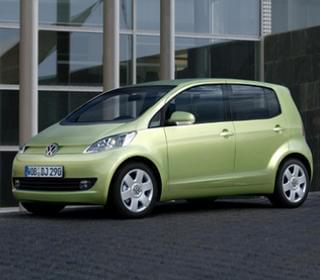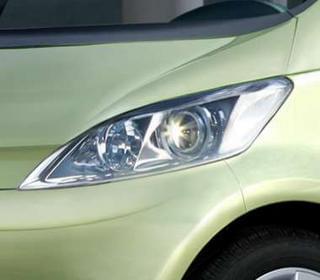-

EMiR - Novinec
- Prispevkov: 268
- Pridružen: So maj 27, 2006 8:05 am
- Kraj: Bled
-

AudiBoy - Poznavalec foruma
- Prispevkov: 1534
- Pridružen: So jul 01, 2006 1:17 pm
- Kraj: Severna Primorska
-

enzospotenzo - Novinec
- Prispevkov: 239
- Pridružen: Ne jan 07, 2007 10:17 pm
- Kraj: Den Haag,cell No.1
-

esem - Moderator foruma
- Prispevkov: 9986
- Pridružen: Ne mar 27, 2005 6:35 am
- Kraj: Ljubljana pri Kozarjah
Prav lep avtoček. Tako meni tudi De Silva.
Več in daljši PR tu http://www.autoblog.com/2007/09/11/fran ... ets-it-up/
O avtu v sodelovanju z Apple-om se ne ve nič, vse kar se ve, je, da sta se šefa sestala, da imata ideje, a kao nič konkretnega. Morda sta se igrala kakšno igrico...
Nič več o tem tu http://www.autoblog.com/2007/08/29/appl ... -the-icar/

Več in daljši PR tu http://www.autoblog.com/2007/09/11/fran ... ets-it-up/
The up! is a city specialist, a car for four persons and all languages, for the job, the university, the drive to the beach and the excursion outside the city gates. A small car that shows a lot of size, because it offers more space than any other car of similar length (3.45 meters) and width (1.63 meters). Its engine – conceivable here are all facets of technology that can be sensibly applied – will run in the rear. And that changes everything: Space, mood and design. Walter de Silva, Chief Designer of the Volkswagen group, sums it up like this: "The up! is not a car whose form will become obsolete within a very brief period of time. It shines in its cleverness and yet is made with loving care. And so the up! is a clear and strong statement for future Volkswagen design." Furthermore, the team of designers and engineers has envisioned the up! concept car as the first member of an entire model line; other facets are entirely conceivable.
Klaus Bischoff, Chief Designer for the Volkswagen Brand, comments on this: "Another reason the up! is so fascinating is because everything, every detail, was thought out anew.
O avtu v sodelovanju z Apple-om se ne ve nič, vse kar se ve, je, da sta se šefa sestala, da imata ideje, a kao nič konkretnega. Morda sta se igrala kakšno igrico...
Nič več o tem tu http://www.autoblog.com/2007/08/29/appl ... -the-icar/

-

Kritik - Stalni uporabnik
- Prispevkov: 624
- Pridružen: Po mar 13, 2006 10:43 am
- Kraj: Laibach / Mengeš
Ma sej ni tako grd.... je pač futurističen... za po mestu vozit je pomojem čist uredu avto... me pa zanima kakšno ceno bo imel, da ne bo tudi ta tako drag in nevreden svoje cene kot je Smart.... glede na inovativen pogon bi rekel, da bo cena od 12k ojrov dalje.... (bivše 3 milijončke)
Hyundai - drive your way
Avto z šibkim motorjem je kot sex z kondomom - sej je, ampak ni pa užitek!
Avto z šibkim motorjem je kot sex z kondomom - sej je, ampak ni pa užitek!
-

Joie de vivre! - Moderator foruma
- Prispevkov: 4258
- Pridružen: Če feb 10, 2005 12:25 pm
- Kraj: Gorenja vas
- jani.vuk
- Novinec
- Prispevkov: 398
- Pridružen: Če nov 23, 2006 3:27 pm
- Kraj: Idrsko pri Kobaridu
-

bass - Mojster foruma
- Prispevkov: 3140
- Pridružen: Če mar 31, 2005 3:59 am
- Kraj: Ljubljana
jani.vuk je napisal/-a:meni deluje kot mešanica fiat 500 in renault modus
Spot on! Tudi jaz sem najprej pomislil na to kombinacijo.
Jeremy Clarkson je napisal/-a:You can not be a true petrolhead until you have owned an Alfa, until you have experienced that roller-coaster of pain, disappointment and agony for that brief moment, when everything works.
-

esem - Moderator foruma
- Prispevkov: 9986
- Pridružen: Ne mar 27, 2005 6:35 am
- Kraj: Ljubljana pri Kozarjah
Pravijo, da bo UP kmalu prišel na trakove ino police. Ne samo dobro, tudi zdravo dejanje, posebno za VW. Za češpljo na torti pa pravijo, da bodo prišle ven še tri variante UP-a, predstavljene pa bodo v Tokiu, Los Angelesu in verjetno Detroitu. Le tako naprej, saj je to že treba zdej!  :P
:P
več (precej o stanju VW in koncerna) tu
http://www.thecarconnection.com/index.a ... icle=13359
več (precej o stanju VW in koncerna) tu
http://www.thecarconnection.com/index.a ... icle=13359
-

martin_krpan - Mojster foruma
- Prispevkov: 11208
- Pridružen: Sr feb 22, 2006 8:26 pm
- Kraj: Ribnica
esem je napisal/-a:Za češpljo na torti pa pravijo, da bodo prišle ven še tri variante UP-a, predstavljene pa bodo v Tokiu, Los Angelesu in verjetno Detroitu.
Space up, družinska verzija koncepta.





Ni čudno, da so za svetovno premiero izbrali prav Japonsko, saj so tam tako konstruirani avtomobili zelo popularni. In če je verjeti tekstu iz Global Auto Index, bo do 2010 razvita tudi serijska izvedenka.
Volkswagen has issued the following press release:
The “New Small Family” from Volkswagen is gaining speed on its journey to the future. Just six weeks after the world premiere of the up! – the two-door city specialist – Europe’s largest automobile producer is now introducing the second member of the “New Small Family” at the Tokyo Motor Show: The space up! concept car.
“The world premiere of the up! at the IAA in Frankfurt served as an initial test to see how the concept of our New Small Family would be received in Europe. And the results of this test were more than favorable,” says Dr. Ulrich Hackenberg, Head of Technical Development. Volkswagen’s chief engineer continues: “The second member of this new family now follows in the space up!. The small van shows that we are consistently exploiting every millimeter of space and creating an emotional design.”
Concept
The space up! is truly a small space wonder. On just 3.68 meters length and 1.63 meters width, it offers the space of a considerably larger vehicle. The clever space concept of the space up! is to a great extent attributable to its engine layout: The environmentallyfriendly gasoline, diesel and electric powertrains of the future up! family are always located in the rear – just like on the Beetle and the Bulli (Microbus) of the past. A brief comparison: The space up! is exactly 23 centimeters longer than the up! shown at the IAA in Frankfurt; accordingly, its wheelbase is also larger (2.56 meter). At 1.54 meter, the van exhibits a height gain of four centimeters. In contrast to the two-door up!, the space up! has four doors. And in actuality there are even six. That is because the van concept car does not have a classic tailgate, but instead a two-part rear door. Hidden behind this door are 220 to 1,005 liters of cargo space, four seat positions that are multivariable in design, and an exceptionally innovative cockpit concept. Numerous functions are controlled via a touchscreen with 3D graphics and proximity sensors.
Exterior design
Volkswagen is introducing the space up! as the second model variant of the “New Small Family”. The up! concept car presented at the IAA in Germany and the space up! now being shown in Japan are unified by a common design philosophy. The cars are characterized by a simple, clear language of forms. The designers consciously omitted any superfluous gimmicks. Like the up!, the space up! is characterized by a completely new harmony between technical layout, on the one hand, and emotional design on the other.
Front end: Distinguishing the front end of the “New SmallFamily” are the headlamps that take an inward diagonal line, between them the horizontally integrated air inlets (minimized aperture optimizes aerodynamics), the VW logo arranged on the front hood (as the only exterior detail kept in chrome) and the smooth-surfaced bumper with a lower segment in the form of the “happy face” that is typical of Volkswagen. An important new aspect when it comes to the headlamp design of the space up!. Here they extend far into the fender, and this also affects the side profile.
Side profile: On its sides, the concept car – like the “Bulli” in earlier days – exhibits a long extended window section and a clearly distinctive, powerful C-pillar whose form is typical of Volkswagen. The A-pillar is positioned far forward. The space between the A and C pillars is spanned by the line of butterfly doors with opposing hinges. Both the front and rear doors are opened by door handles at the height of the B pillars.
A key concept here is wheel housings: Hidden under them are the self-confident and large 18-inch wheels with size 165/50 tires. Distinctive in this area are the short front and rear overhangs. The front overhang, from the axle hub to the outer skin of the bumper measures just 53 centimeters; in the rear it is 59 centimeters. The result: crisp proportions.
Rear end: Also unmistakable are the design features of the rear end. Take the example of the rear door: It fills out practically the entire car area above the bumper. Similar to the smaller up!, the door – split 1/3 to 2/3 here – consists of a transparent material. Integrated beneath it are the taillights. Fully opened, the door offers a cargo width of 101 centimeters. The bumper itself was designed to match its counterpart at the front end. Thanks to the wide track width of 1.42 meters the outer edges of the wheels are in line with the wheel housings. The effect is that the entire vehicle width of 1.63 meters seems to consist of axles plus tires and wheels. Meanwhile, the only details that boldly jump outside of the vehicle width are the round-shaped outside mirrors, like the ones on the up!
Interior design
The space up! is a full-fledged four-seater. In the rear, a bench seat is implemented with two integrated child seats. To convert them from adult to child seats, the seating surfaces are simply folded over, and two shoulder supports are folded out on each side. Finished. But not only will children travel comfortably in a production version of the concept car. The reason: The cushions of the four seats – for driver, front and rear passengers – consist of an airf low foam that automatically adapts to individual anatomies. In addition, the seating position is pleasantly high, making it extremely comfortable.
With the exception of the driver’s seat, all seats can also be folded and removed. If the seats are “only” folded, this creates a level cargo area with a capacity of up to 1,005 liters. With four people on board, cargo capacity up to window level height is still 220 liters. Since the low-profile engine of the space up! is located in the rear, objects with a maximum length of 2.8 meters can be stowed in a pass-through to the front cargo space. Remember: The concept van is just 3.68 meters long and thereby 15 centimeters shorter than the Fox, which is the most compact Volkswagen today.
Intuitive interface
Since the car’s cockpit was conceived as a module to be applied across all models of the “New Small Family”, the cockpit unit was copied from the up! concept car presented in Frankfurt, with slight modifications. It is a cockpit with a great future. In detail, the space up! has two central displays: In the cockpit, an 8-inch monitor displays information such as vehicle speed, fuel level and range as well as momentary CO2 emissions. In the middle of the instruments a 7-inch monitor shows how future human machine interfaces might look and operate. Here all conceivable functions are controlled via a touchscreen that – using proximity sensors – reacts to gestures as well, i.e. specific hand movements. Always shown on the screen is a control bar with standard functions such as climate control or audio volume control. Developers packaged functions of other higher-order systems – navigation, telephone, radio, Internet, images, films, etc. – on a display level that has been referred to internally as the “main menu carousel” – a type of virtual carousel. It consists of the icons of different system functions (telephone, navigation, etc.). When the user touches the “main menu carousel” it can be rotated by touchscreen. Visually, this control is just as spectacular as it is intuitive. When the desired function appears on the main menu carousel – such as the telephone – the user just needs to move his or her hand to the display to switch to the telephone menu thanks to proximity sensor technology.
That is precisely what is typical of Volkswagen. Toward the end of this decade, the first Volkswagen customers might be able to enjoy this new generation of intuitive controls aboard the New Small Family.
The development of production models has already begun…
Kobilica:
http://www.avtomobilizem.com/forum/viewtopic.php?f=7&t=88076&start=0
http://www.avtomobilizem.com/forum/viewtopic.php?f=7&t=88076&start=0
-

cliort - Novinec
- Prispevkov: 338
- Pridružen: To dec 05, 2006 8:08 pm
-

esem - Moderator foruma
- Prispevkov: 9986
- Pridružen: Ne mar 27, 2005 6:35 am
- Kraj: Ljubljana pri Kozarjah
Tretji UP po imenu VW Space Up! Blue se predstavlja na showu v LA. Je plug-in el. hibrid, ima LiIon baterije za čez 100 km avtonomije in nove gorivne celice na vodik (delujejo na višji temperaturi, so lažje in cenejše) - z njimi se avtonomija poveča na skoraj 400 km. Več (+ PR) tu http://www.autoblog.com/2007/11/14/la-2 ... e-up-blue/
29 CS slik tu http://www.autoblog.com/photos/vw-space ... 8267/full/

A solar panel on the roof also helps charge the onboard batteries. On battery power alone, the little cruiser has a range of 65 miles with a full charge. When the fuel cell is added into the mix, maximum range increases to 220 miles. VW claims that its high temperature fuel cell (FC-HT) is more production-viable in the long tun than competing fuel cell tech because it's lighter, more geared to everyday use and less costly to produce.
29 CS slik tu http://www.autoblog.com/photos/vw-space ... 8267/full/

-

RR - Stalni uporabnik
- Prispevkov: 647
- Pridružen: To mar 09, 2004 8:52 am
-

Uribobo - Novinec
- Prispevkov: 455
- Pridružen: Sr jan 24, 2007 3:26 pm
-

martin_krpan - Mojster foruma
- Prispevkov: 11208
- Pridružen: Sr feb 22, 2006 8:26 pm
- Kraj: Ribnica
Svoj Up! bo dobila tudi Škoda.
Vir: left lane news
Skoda will produce a vehicles based on the Volkswagen Up small car platform, a new report finds. The new model will help Skoda to increase its production at the automaker's plants in Russia, India and China. The new model will also help Skoda meet the growing demand for small cars in developing markets.
The smallest car in Skoda's current lineup is the Fabia, but the Skoda-badged Up promises to be even smaller.
VW recently announced that it could begin Up production in India as soon as 2011. VW will produce the Up in three different markets in 2010, but the German automaker has yet to name the locations.
At least one version of the Up is headed to the U.S.
Vir: left lane news
Kobilica:
http://www.avtomobilizem.com/forum/viewtopic.php?f=7&t=88076&start=0
http://www.avtomobilizem.com/forum/viewtopic.php?f=7&t=88076&start=0
-

T1cK0 - Uporabnik
- Prispevkov: 887
- Pridružen: So nov 13, 2004 11:14 pm
-

AgitatoR - Mojster foruma
- Prispevkov: 4443
- Pridružen: To jun 15, 2004 3:09 pm
- Kraj: Rbn 104
-

Paris - Uporabnik
- Prispevkov: 1057
- Pridružen: To okt 17, 2006 7:35 pm
- Kraj: Somewhere over the rainbow
-

Lignage - Moderator foruma
- Prispevkov: 3938
- Pridružen: To mar 21, 2006 3:17 am
-

martk - Uporabnik
- Prispevkov: 837
- Pridružen: Ne jun 27, 2004 9:26 pm
Kdo je prisoten
Po forumu brska: 0 registriranih uporabnikov in 5 gostov









